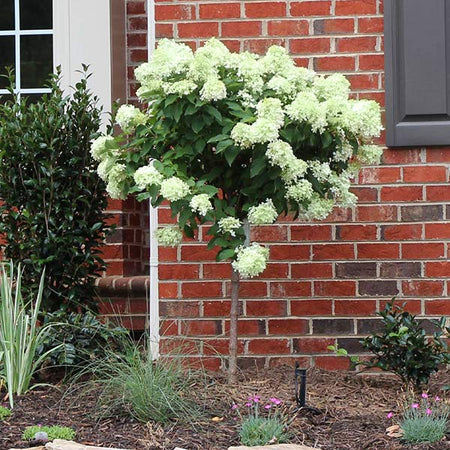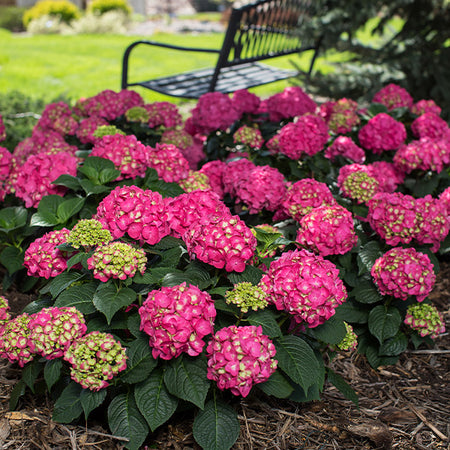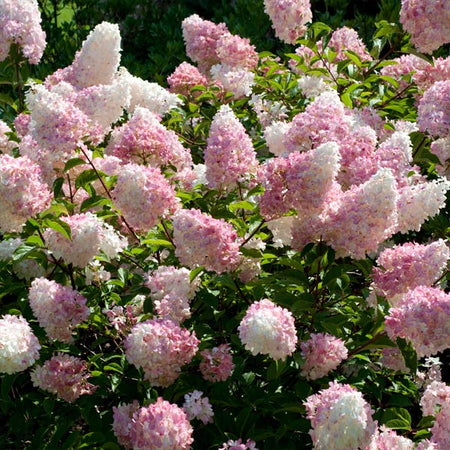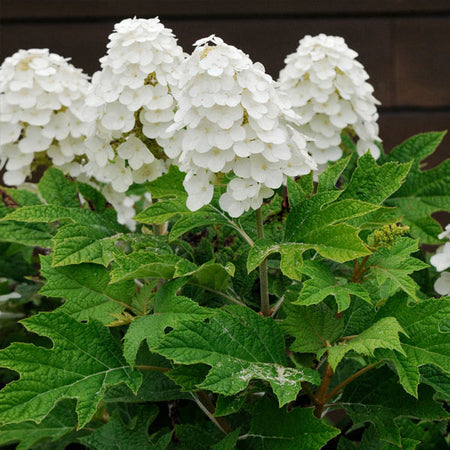Hydrangea Shrubs - By Type
Hydrangea Shrubs
Showing 1 - 20 of 21 items
Starting at $21.99
Growing Zones: 4-9
Starting at $27.99
Growing Zones: 4-9
Starting at $119.99
Growing Zones: 3-8
Starting at $29.99
Growing Zones: 3-8
Starting at $34.99
Growing Zones: 4-9
Starting at $68.99
Growing Zones: 3-8
Starting at $22.99
Growing Zones: 3-8
Starting at $79.99
Growing Zones: 4-9
Starting at $30.99
Growing Zones: 4-8
Starting at $79.99
Growing Zones: 4-9
Starting at $60.99
Growing Zones: 4-8
Starting at $26.99
Growing Zones: 6-9
Starting at $133.99
Growing Zones: 4-8
Growing Zones: 4-9
Sold Out
Growing Zones: 5-9
Sold Out
Growing Zones: 5-9
Sold Out
Growing Zones: 5-9
Sold Out
Growing Zones: 3-8
Growing Zones: 5-9
Sold Out
Growing Zones: 3-8
The Complete Guide To Hydrangeas
When you first lay eyes on this gorgeous blossoming shrub, you may think that it took loads of work to produce such a showy specimen. But Hydrangeas are, in fact, quick growing, low-maintenance shrubs that produce astonishingly beautiful blossoms in a huge variety of colors. The shrub rapidly fills its growing space, making it a great core plant for your garden bed.
In intimate spaces and wide open landscapes alike, hydrangeas make a bold statement with their big, gorgeous flowers. Use them to create an informal hedge, to accent a perennial garden, as foundation plants, en masse in an island or as a single specimen in a container on a patio or porch. Hydrangeas are as versatile as they are beautiful.
Top Hydrangea Varieties
There are hundreds of varieties of Hydrangeas. Mophead Hydrangeas are the most popular bigleaf Hydrangea. Lacecaps are similar to Mophead Hydrangeas, but with flowers that feature small center buds surrounded by large petals.

Mountain Hydrangeas are similar to other bigleaf Hydrangea varieties, but they're able to survive harsh winter climates. Panicle Hydrangeas feature large, cone-shaped flower heads. Oakleaf Hydrangeas have large, distinctive lobed leaves that resemble an Oak Tree.
Most Hydrangeas grow in shrub forms that can also be pruned into trees. However, Climbing Hydrangeas are actually vines with large blooms that can climb structures like trellises or porches.
Read on for more information about a few of the most popular Hydrangea varieties:
Mophead Hydrangeas: Looking like a mop of luscious hair, Mopheads produce massive blooms of densely packed flowers that cover the majority of the plant. Some varieties will bloom for 6 months at a time, with others displaying an assortment of flower colors, notably blues and pinks, on the same plant.
Climbing Hydrangeas: This unique Hydrangea delivers beauty to garden walls and fences as it climbs up surfaces, blanketing them with delicate lacecap blossoms that come to life in the summertime. And they're hardier than other Hydrangeas - stand back and watch Climbing Hydrangeas fight off frosty winter in Chicago or the humidity of a Maryland summer.
Hydrangea Trees: Incredibly reliable bloomers, Hydrangea Trees bring a stark contrast to your garden bed, producing huge clusters of flowers pruned into an elegant tree form, high above the ground. These are great center pieces for any garden, and they attract many pollinators like bees and butterflies.'
And for a few of our favorite Hydrangea varieties:
- Endless Summer is the original reblooming Mophead Hydrangea, with big beautiful blooms in either blue or pink.
- The Bloomstruck Hydrangea features rigid red stems and intense purple-blue or pink blooms throughout the summer.
- The Nikko Blue Hydrangea is the classic, early-summer blooming Mophead offering large blue or pink blooms for six weeks or more.
- The Vanilla Strawberry Hydrangea blooms in full sun from mid to late summer. The creamy white flower panicles turn deep red-pink as they mature.
- The Limelight Hydrangea offers green-tinged white blooms in summer; a perfect large container plant or landscape specimen.
Choosing The Perfect Hydrangea

Hydrangeas vary in sunlight tolerance from species to species, so it is important to select a suitable variety for the conditions in your landscape.
Endless Summer, Bloomstruck and Nikko Blue are from the species Hydrangea macrophylla. They prefer planting sites with bright filtered sunlight or morning sun and afternoon shade. They will tolerate a bit more sun with consistently moist soil, but wilt in extreme heat, so it's best to err slightly on the side of shade.
Vanilla Strawberry and Limelight are more sun-loving varieties of Hydrangea paniculata. At least six hours of direct sun exposure is critical for Hydrangea paniculatas to grow and flower their best.
Also consider whether you want a wide-growing shrub, a more narrow Hydrangea Tree, or the vine-like growth of the Climbing Hydrangea. The right variety will depend on where you want to plant it and what look you're trying to achieve!
Benefits of Hydrangeas
Hydrangeas are widely loved for their showy displays of large, clustered flowers, found in a huge variety of colors and shapes. They have long flowering seasons and reliably produce attractive blooms that can last up to 6 months.
Many growers are surprised to learn that these delicate-looking shrubs are in fact incredibly hardy, needing next to no work to flourish. The Hydrangea family comes in many forms including trees, shrubs and climbing plants, they're easy to incorporate into your landscape -whether in a garden bed, an indoor pot or a patio wall.
How To Plant Hydrangeas
Hydrangeas require moist, well drained soil. Heavy clay or sandy soils should be amended with generous helpings of compost to improve moisture balance. Mixing compost with native soil at a 1:1 ratio, to a depth of ten or twelve inches is helpful.
Do not fertilize at planting time. Four to six weeks after planting, apply a granular fertilizer for acid-loving shrubs. Be sure to provide a bit of extra water before fertilizing and for a week or so thereafter.
One of the best parts of growing Mophead Hydrangeas is the option to change the bloom color from blue to pink, or vice versa. This can be done by raising or lowering the soil pH.
To change from blue to pink, spread one cup of garden lime per foot of height over the entire root zone of the hydrangea. To change from pink to blue, maintain a three inch layer of organic mulch and treat with a solution of 1 Tbsp. aluminum sulfate in 1 gallon of water weekly, throughout the growing season. The color of Panicle Hydrangeas cannot be manipulated in this way.
Caring for Your Hydrangeas
While Hydrangea bushes and shrubs thrive without much attention, some practices will maximize plant health and growth:
- Plant in the fall or the early spring, to allow healthy root formation before blossoms occur.
- Hydrangeas love morning sun, and enjoy full or partial sunlight, so avoid planting under dense trees.
- Plant in well-drained soil that has an abundance of organic material to produce the best blooms.
- Water once per week or provide 1 inch of water per week to optimize growth.
Pruning Hydrangeas
Early on, Hydrangeas require little to no pruning, with the exception of removing dried blooms if desired. Tree-formed Hydrangeas may send up occasional sprouts at the base or along the trunk, which should be pinched off whenever they appear.When Hydrangeas become established after a year or so, you may want to remove old or damaged stems, which can be safely done in late winter. Prior to the emergence of new growth in spring, simply cut damaged or undesirable stems all the way to the ground. If the overall size or shape of the plant must be addressed, the best time to prune is immediately after bloom time for Mopheads, or late winter for Panicles.
Find the right Hydrangea for you!
Hydrangeas hold a special place in many gardeners' hearts, for their breathtaking blooms and bright colors. Hydrangeas provide a great return on investment for your garden space as they quickly spread out, bringing with them color and life. We think every garden should have one of these amazing plants- find yours today!























